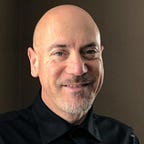Texas Energy Failure: A Prelude Of What’s To Come
Climate change is a force multiplier. The Great Texas Faceplant of 2021 provides a prelude to what we can expect through the rest of this century.
My home state of Texas experienced a massive failure in public energy infrastructure during last week’s historic cold snap. This failure represents a prelude in two ways — one trivial, one profound.
First for the trivial…
The misery Texans are experiencing now at the hands of their aging electrical system serves as the perfect prelude to a deeply researched series of articles regarding Grid Evolution I have been working for the last few months.
(If you haven’t yet, read my backgrounder article about our past-paradigm grid.)
Speaking with global experts on grid modernization has convinced me that events such as the bankruptcy of PG&E that I wrote about in the article PG&E: The First S&P 500 Climate Change Casualty, and the Texas-sized infrastructure faceplant we witnessed last week were both the perfectly predictable products of a failed, Industrial Revolution paradigm for electric generation, transmission, and distribution.
My deep dive on the next generation grid and my introduction to some amazing organizations working to build it — LF Energy / SOGNO, Swell, and sonnen — will be published in this column Thursday (25 February 2021) and we will have several other pieces that explore facets of this vital issue in early March.
Now for the profound meaning of “Texas as a prelude”…
Over the past few months, I have been making presentations to undergraduate Engineering students and graduate and executive-level Business students about Climate Change investing, or what I am now calling “ARM Investing” (Adaptation, Restoration, and Mitigation).
The point on which I hammer in these presentations is that the danger of climate change is its multiplicative nature.
In other words, the reality of climate change is that our civilization will suffer not from a single discrete catastrophe, but rather from a stream of overlapping disasters, the severity of one exacerbating the severity of others.
The Great Texas Grid Failure of 2021 represents a glimpse into this multiplicative dynamic.
The arctic blast — which scientific research suggests was likely driven by climate change via the creation of a torpid, meandering Polar Vortex — occurred during a worldwide pandemic.
Just a week before the cold snap hit the Lone Star State, a team from Cambridge University published research tying climate change to the Covid-19 pandemic. Their research suggests that changes in climate altered the population densities and species concentrations of bats in southern China, making viral infections and subsequent mutations more likely. Bats are the likely culprit as the species infected with a virus that eventually made the cross-species jump to humans as SARS-COV-2.
The Polar Vortex-driven blast of arctic air into my old hometown of Houston, Texas and the concentration of bat species in a particular corner of China both have — according to some of the best scientific minds of our age — the same root cause: climate change.
The social distancing protocols implemented to prevent the spread of disease made disaster response to the extreme cold more difficult because of the effective reduction of warming center capacity. Pandemic response exacerbated suffering from the cold snap and the cold snap made it harder to deal with the pandemic.
I am in awe of the scientists, medical professionals, and policy makers working so hard on Covid response, but my take is that the severity of the pandemic — from both economic and social perspectives — pales in comparison to the potential disruption from climate change.
Climate change is the biggest threat our civilization has ever faced. It also represents the greatest opportunity in the history of our species.
Join me here on Thursday for a glimpse into what a truly resilient grid looks like.
Intelligent investors take note.
Follow me on Twitter or LinkedIn. Check out my website or some of my other work here.
Originally published at https://www.forbes.com.
